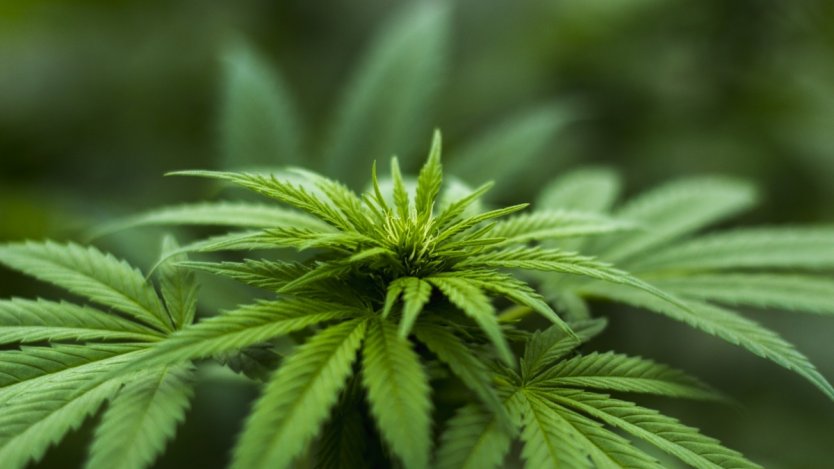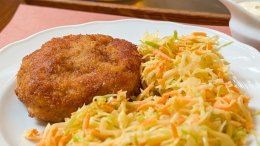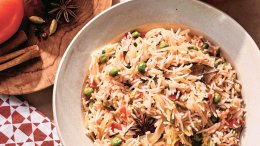Come October 17, 2018, Canada will be the second country in the world to legalize the use of recreational cannabis with the implementation of Bill C-45, also known as The Cannabis Act. This means adults will be able to legally purchase, grow and use a limited quantity of cannabis. It’s been legal for medical purposes since 2001.
Whether your interest is medicinal or recreational, cooking with cannabis may be something you want to explore.
Edibles are nothing new, in fact; Health Canada has declared edibles the safest way to consume cannabis. But, prepared edibles aren’t due to be greenlighted for roughly another year after the bill is rolled out. And although currently illegal, Canadians have easy access to them online, but the products are unregulated and unmonitored.
The government is rightfully taking more time to get it right. Educating the public on how to safely consume edibles (in regards to dosage, serving size, clear labelling and child-proof-packaging) is of utmost importance. Luckily, we can look to and perhaps, learn from, the legalization experiments of our neighbours to the south, since several states have already been at it for several years now. Last October, for example (after edibles have been available on the market for a couple of years), Colorado banned THC gummy products shaped like animals, humans, fruits or cartoons to reduce potential appeal to children.
Before eating or cooking, it’s important to remember that not all cannabis is created equal, and it’s imperative to understand the difference between THC and CBD, the two different compounds found in cannabis. THC is the psychoactive cannabinoid that gets you high and CBD is a non-psychoactive medicinal compound, that’s what people use to treat seizures, and scientific studies are starting to show that it kills cancer cells and shrinks tumours.
“When you eat marijuana (as opposed to inhaling), that actually makes it a lot more of an intense impact for people,” explained Shekhar Parmar, the CEO of Harvest Medicine, in a recent interview on CBC’s The Homestretch “Pot 101” series. “So controlling dosing is something that's been problematic with cannabis in an edible format, which is why you don't see it in the legal regime because that part hasn't been fully figured out by a lot of people.”
But just because we don’t quite have a grasp on edibles yet, doesn’t mean business isn’t booming in other markets. “It's been a very successful market in Colorado. We've seen the whole range of companies pop up,” he continued. “This business is huge. I don't think in the course of our lifetime, we have very many opportunities to give birth to an industry of this scope.”
Edibles aside, what does this new legislation mean for the restaurant industry? Is it realistic to bring cannabis into a professional kitchen? Some pro-cannabis chefs are ready to roll up their sleeves and prove it can be infused into many dishes and paired with a myriad of flavours, techniques and textures. But like with anything, there are different schools of thought.
Some chefs believe it’s about to emerge as a mainstream food trend, or better yet, a health food trend, treating everything from headaches to insomnia to cancer.
In a recent interview with CTV Calgary, John Michael MacNeil, the executive chef of The Beltliner diner and a self-described longtime cannabis advocate says that cannabis will be a welcome addition in his kitchen at the restaurant once prepared edibles are legalized.
“It’s something very special to me,” said MacNeil. “It’s a brand-new ingredient and that’s what a chef always looks for, something special to use. They’re always searching around the globe and we have some really great ingredients right here in Alberta.”
MacNeil has a permit to possess marijuana under the Access to Cannabis for Medical Purposes Regulations (ACMPR). Years ago, he helped build Re-Treat, a premium cannabis edibles company that has been selling its cookie and brownie mixes online for several years and hopes to start selling products in dispensaries this year.
But what does the process of cooking with cannabis actually look like? “The active ingredients in cannabis are something that's fat soluble for the most part, so what it requires is that you can't actually eat cannabis by itself; it requires heat and a bit of fat to coax those active ingredients out,” explained Parmar. “In the market today, you can either get dried cannabis and you can decarboxylate it yourself, which is heating the cannabis to release the active ingredients, or you can buy edible oil. When you do those processes, you can essentially mix it in with any place where you would have fat in the recipe. That could be your avocado toast, your brownies that are very famous, or even drinks.”
When it comes to cooking, many are finding that using cannabis oil is the easiest way to go.
“Weed itself would not be ideal to work with, but oils, however, are awesome to use,” said Chris Shaften, chef and owner of KRAFTY Kitchen + Bar in Kelowna. “The flavour can range from interesting to unappealing, so if I am making something with an oil, I’d use critically extracted oils, which have undergone a final processing stage to remove the terpenes and other flavouring compounds. In the end, the oil I'd use contributes almost no flavour to the product so I do not have to cover or combat the taste.”
It’s important to note that Shaften is pro-decriminalizing cannabis, but not a user himself. Cooking with the ingredient will be like cooking and experimenting with any other ingredient. “Although it would be fun to experiment, I don’t see it becoming mainstream on menus in restaurants,” he added. “The biggest hurdle is dosing. As a chef, our responsibility is the comfort and safety of our guests, so it would be irresponsible to serve a dish with a THC content that we could not control or guarantee. It would be like a bartender free pouring moonshine.”
Luckily, in preparation for the new legislation, many free apps like Strainprint are popping up and provide information on dosage or efficacy when cooking with cannabis and can help individuals understand strain choice, dosage and ingestion methods.
Bottom line? It’s an exciting time, with many unknowns on the horizon. There will be a steep learning curve and growing pains as we explore this new territory and industry.













